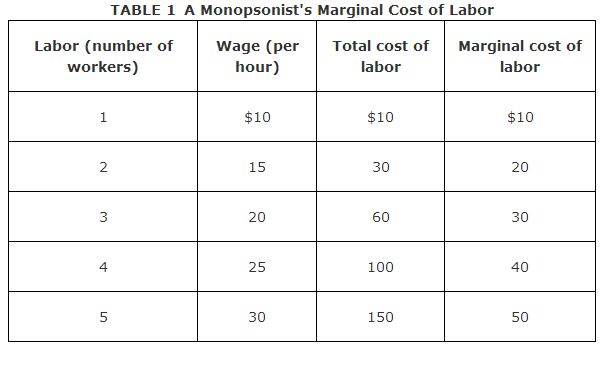Equilibrium in a Monopsony Market
In a monopsony market, the monopsonist firm—like any profit‐maximizing firm—determines the equilibrium number of workers to hire by equating its marginal revenue product of labor with its marginal cost of labor. Figure illustrates the monopsony labor market equilibrium, using the supply and cost data from Table .



The marginal revenue product of labor equals the marginal cost of labor when the firm employs 3 workers. The equilibrium market wage rate is determined by the market labor supply curve. In order to employ 3 workers, the firm will have to pay a wage of $20. Hence, the equilibrium wage is $20, and the equilibrium number of workers employed is 3.
Because the monopsonist is the only demander of labor in the market, it has the power to pay wages below the marginal revenue product of labor and to hire fewer workers than a perfectly competitive firm. In Figure , the perfectly competitive firm would face a market wage of $25 because that is the wage rate corresponding to the intersection of the market demand and supply curves. If the perfectly competitive firm had the same marginal revenue product as the monopsonist, the perfectly competitive firm would equate marginal revenue product with the market wage and choose to hire 4 workers at $25. The monopsonist's decision to hire only 3 workers at a wage of $20 makes it clear that monopsony, like monopoly in a product market, reduces society's welfare.